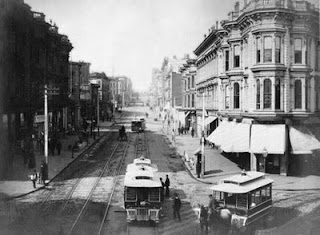


[Photo of Freeborn Mausoleum by Michael Colbruno; Center photo - Charles James Freeborn; Bottom sketch is Mrs. James (Eleanor) Freeborn]
James Freeborn (1828-1894) came to California on a steamer from Nova Scotia.
He became a prominent businessman in San Francisco. He co-owned the brokerage firm Woods & Freeborn and Castle & Freeborn grocers. He also served as a director of the Bank of California. He was owner of the gold mining firm of Alaska Mill & Mining Company, which was previously known as the Treadwell Mine and was the second highest producing gold mine at one time.
He retired in 1877 and moved to Paris where he died of Bright’s Disease in 1894. At the time of his death his estate was valued at about $1 million, including his residence at 1830 Jackson St. in San Francisco and numerous commercial properties.
Charles James Freeborn (1877-1919) was born in San Francisco on November 11, 1877, the son of James and Eleanor Freeborn. He graduated from Yale University in 1899. He became the director of the Freeborn Estate Corporation.
A devoted Francophile, in 1914 he and a group of friends joined the Ambulance Service in Neuilly, France. He became a tireless worker and provided great aid to the French hospital authorities. During this time he traveled back to California with film of the war to show Americans the atrocities that were occurring. Because of his efforts, he received numerous honors from the French.
Freeborn’s tireless efforts left him exhausted, he contracted influenza and three weeks later on February 13, 1919, he died in Paris.
The family mausoleum was built by Ettore Bernieri, a California sculptor and contractor.
Subscribe to Michael Colbruno's Mountain View Cemetery Bio Tour by Email











